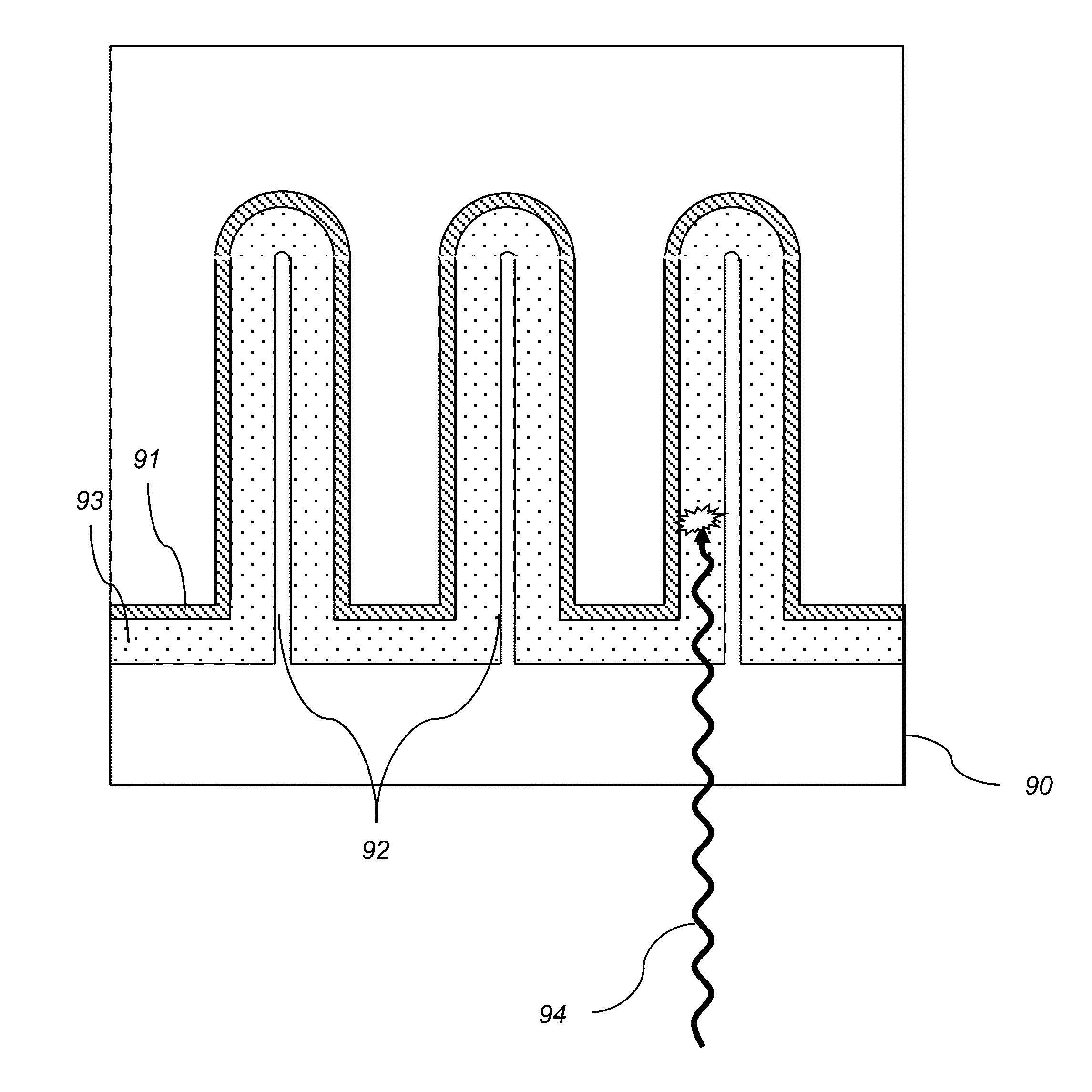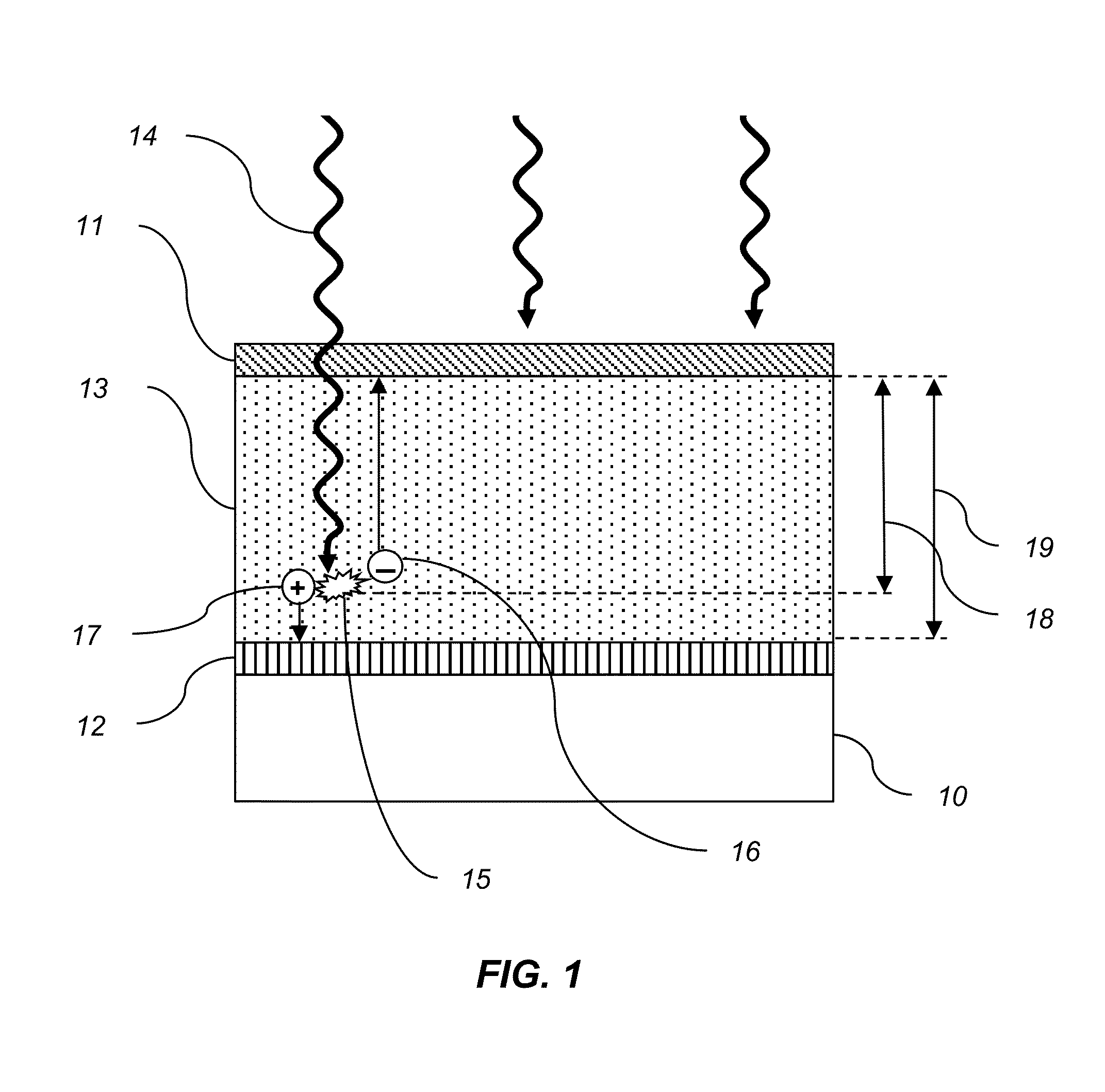Vertical junction solar cell structure and method
- Summary
- Abstract
- Description
- Claims
- Application Information
AI Technical Summary
Benefits of technology
Problems solved by technology
Method used
Image
Examples
first embodiment
[0192]In a first embodiment of the present invention, shown in FIG. 5 in both an elevation and a plan view, a vertical junction nanostructured thin film solar cell includes a substrate 50 upon which there is formed a two dimensional array of elongate nanostructures 52 extending substantially vertically from a top surface of the substrate. The elongate nanostructures may be formed as a separate layer or component, or the elongate nanostructures may be fashioned integrally with or from the substrate itself. For example, the elongate nanostructures may be fashioned by removing material from the top surface of the substrate. In such case the nanostructures can be considered to be integral to the substrate rather than distinct features formed on or added to the substrate.
[0193]The solar cell structure further includes a thin film solar cell disposed over the elongate nanostructures such that the thin film solar cell substantially conforms to the topography of the nanostructures. The thin...
second embodiment
[0211]In a second embodiment, a vertical junction nanostructured thin film solar cell may be formed by a process of: 1) forming a substrate, 2) forming a two dimensional array of elongate nanostructures extending substantially perpendicularly from a surface of the substrate; and 3) disposing a thin film solar cell over the nanostructures such that the thin film substantially conforms to the topography of the nanostructures using a process that may be of any suitable type including, hydrogenated amorphous silicon (a-Si:H), microcrystalline silicon (uc-Si), cadmium telluride (CdTe), copper indium gallium sellenide or sulfide (CIGS), organic or polymer materials, or colloidal quantum dots.
third embodiment
[0212]In a third embodiment, the elongate nanostructures are formed on a substrate by, in one case, an additive method such as a one-dimensional growth method, for example, metal catalysed vapor-liquid-solid (VLS) growth, or solid-liquid-solid (SLS) growth. In another variation, the elongate nanostructures are formed by a subtractive method such as masking and etching of the substrate. In yet another variation, the elongate nanostructures are formed by a combination of an additive and subtractive methods such as layer deposition followed by masking and etching of the layer.
PUM
 Login to View More
Login to View More Abstract
Description
Claims
Application Information
 Login to View More
Login to View More - R&D
- Intellectual Property
- Life Sciences
- Materials
- Tech Scout
- Unparalleled Data Quality
- Higher Quality Content
- 60% Fewer Hallucinations
Browse by: Latest US Patents, China's latest patents, Technical Efficacy Thesaurus, Application Domain, Technology Topic, Popular Technical Reports.
© 2025 PatSnap. All rights reserved.Legal|Privacy policy|Modern Slavery Act Transparency Statement|Sitemap|About US| Contact US: help@patsnap.com



